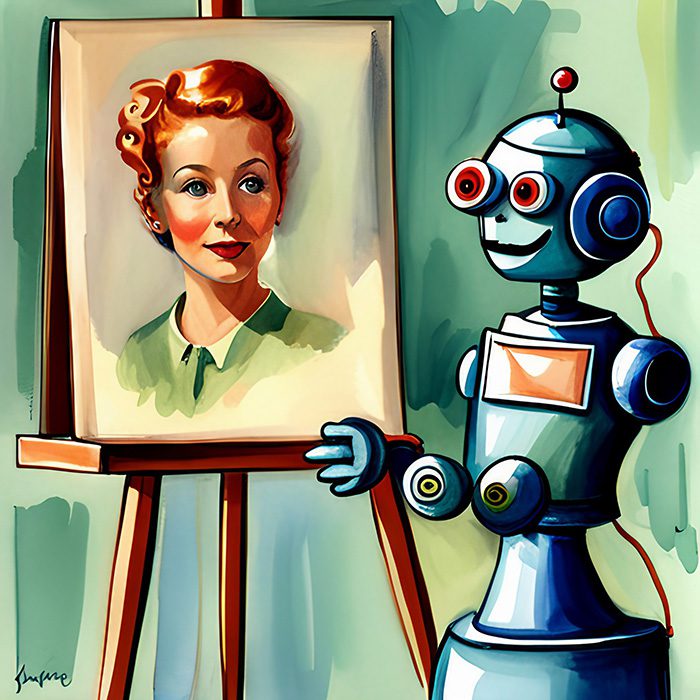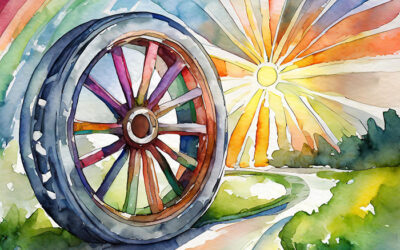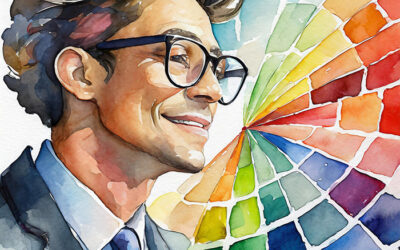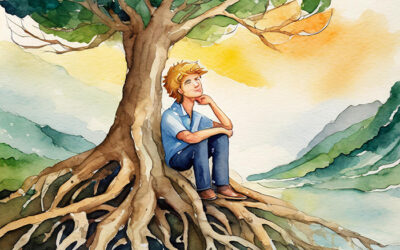Artificial Intelligence (AI) has revolutionized many industries, including marketing and design. However, when it comes to creativity in graphic design, AI has yet to achieve the same level of originality and uniqueness as human beings.
In this article, we will explore the nature of creativity, the aspects of human creativity, the limitations of AI in achieving creativity, and potential future developments that could change the limitations of artificial intelligence and its relationship with creativity as well as current tools for speeding up workflows.
Update! (August 2023) A recent federal judge has ruled that AI art can not be copyrighted. This has considerable potential implications for marketing and graphic design. Learn more in my post here.
Defining Creativity
Creativity is a complex and multifaceted concept that can be defined as the ability to generate ideas, solutions, or artistic expressions that are both novel and valuable. It involves cognitive processes, emotional experiences, and social interactions, all of which contribute to generating original and meaningful outcomes.
Aspects of Human Creativity in Graphic Design
Human creativity in graphic design is rooted in several key aspects:
- Divergent thinking: The ability to explore multiple design solutions or ideas simultaneously and to think outside the box.
- Convergent thinking: The capacity to evaluate and synthesize design elements to arrive at the best possible visual solution.
- Intuition: The ability to make connections and generate insights based on subconscious processes and personal experiences.
- Emotional intelligence: The capacity to understand and manage emotions, both in oneself and others, which can influence creative design decisions.
- Aesthetic judgment: The ability to make value judgments and appreciate beauty or artistic merit in different forms of visual expression.
Limitations of AI in Achieving Creativity in Graphic Design
AI systems, particularly those based on machine learning, have shown remarkable pattern recognition, prediction, and optimization capabilities. However, they face several limitations when it comes to achieving true creativity in graphic design:
- Dependence on existing data: Machine learning algorithms learn from historical data, which means they can only generate design solutions based on the information they have been fed. They cannot think beyond their existing data set or create something new.
- Lack of intuition: AI systems lack the human ability to make intuitive leaps or generate insights based on subconscious processes and personal experiences. They can only analyze data based on pre-defined rules and algorithms.
- Inability to make value judgments: AI systems cannot make value judgments or aesthetic choices, as these require subjective experiences and emotions that machines do not possess.
- Lack of emotional intelligence: AI systems do not have the ability to understand or manage emotions, which are crucial in the creative design process. This limits their capacity to empathize with human experiences and create emotionally resonant designs.
Future Developments and Potential Breakthroughs
While AI currently faces limitations in achieving true creativity in graphic design, future developments, and breakthroughs could potentially change this:
- Advancements in AI models: Newer AI models, such as generative adversarial networks (GANs) and transformer-based models, show promise in generating more original and creative content by learning from diverse data sources and leveraging advanced algorithms.
- Combining AI with human creativity: Collaborative efforts between humans and AI systems can result in more creative outcomes, as humans can provide the emotional, intuitive, and aesthetic inputs that AI lacks.
- Developing AI systems with emotional intelligence: Researchers are working on developing AI systems that can understand and respond to human emotions, which could enhance their creative capabilities in graphic design.
AI-Driven Tools for Graphic Designers to Speed Up Workflows
Artificial Intelligence (AI) has made its way into the world of graphic design, providing designers with innovative tools that can help streamline their workflows and enhance their creative processes. While AI may not be able to replace human creativity, it can certainly assist in various aspects of design work.
1. Filters in Adobe Creative Cloud
Adobe Creative Cloud has introduced a range of AI-powered features, such as the Neural Filters and, as of this week, Generative fill (still in beta), that leverage machine learning algorithms to help designers quickly edit images and achieve impressive results. Some of the notable filters include:
- Smart Portrait: This filter allows you to adjust facial features, expressions, and even age with just a few sliders. It can be particularly helpful for retouching portraits or creating unique character designs.
- Skin Smoothing: This filter helps designers to quickly retouch and smooth out skin imperfections in photos, saving time on manual editing.
- Colorize: This filter can automatically add color to black-and-white images or change the colors in existing photos, enabling designers to experiment with different color palettes more efficiently.
- Generative Fill: which has everyone very interested, might be the heaviest hitter yet. It used test prompts to generate new sections of images. The filter is still in Beta testing, but early releases are promising.
2. Canva
Canva is a popular online design tool that uses AI algorithms to provide users with a wide selection of pre-designed templates. The platform also offers a feature called “Magic Resize,” which allows you to automatically resize their designs for different platforms and formats, significantly speeding up workflows.
Note: Canva has many pros and cons and currently should not be considered a professional-level design tool. Before you consider Canva your go-to program of choice, read my post on the pitfalls on Canva.
3. DeepArt.io
DeepArt.io is an AI-driven tool that uses deep learning algorithms to transform images into artwork inspired by famous artists’ styles. You can use this tool to quickly generate unique artwork for your projects, experiment with different artistic styles, and save time on manual illustration.
4. Remove.bg
Remove.bg is an AI-powered background removal tool that allows designers to quickly and accurately remove the background from images, saving time on manual editing. The tool can be beneficial for creating product images, social media visuals, or any design project requiring clean image cutouts.
In conclusion, although AI-driven tools cannot replace human creativity, they undoubtedly enhance and streamline the design process for graphic designers. Despite the current limitations of AI in achieving true creativity due to its reliance on existing data, lack of intuition, inability to make value judgments, and absence of emotional intelligence, we remain optimistic about the future relationship between human designers and AI. As technology continues to advance, it holds the potential to reshape the collaboration between AI and human creativity, fostering a symbiotic partnership that elevates the field of graphic design to new heights.





0 Comments